End-of-Life – Windows 7 and Windows Server 2008/2011
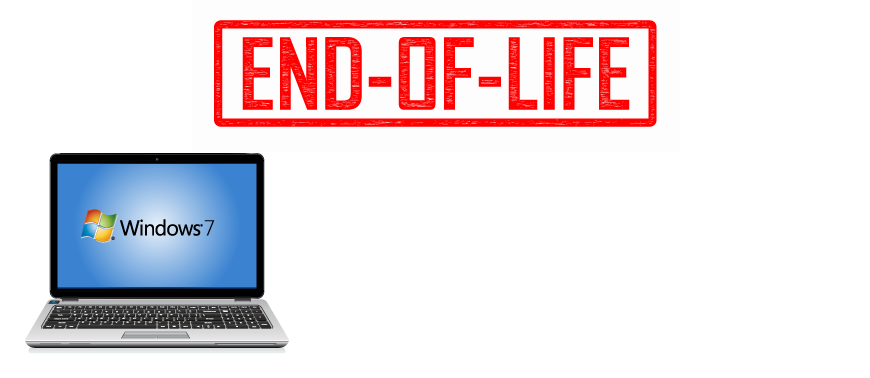
Attention Businesses
If your business is currently using Windows 7, Windows Server 2008, Windows Server 2008 R2, or Small Business Server (SBS) 2011, please be aware Microsoft will no longer provide support or updates to these operating systems after January 14th, 2020.
On January 14th, 2020, the Operating Systems (OS) mentioned above will reach their End-Of-Life (EOL) and will become insecure, unsupported, and no longer compliant with security regulations, such as HIPAA, SOX, GLBA, and SEC / NASD. To continue using computers without security issues, Microsoft is recommending businesses (and end-users) to upgrade affected workstations to Windows 10 and affected servers to Windows Server 2019 to stay protected and compliant with government regulations.
TCSP is providing this information as a courtesy notice to business owners, managers, and end-users. Active computers and servers should be reviewed and affected devices should be addressed adequately before reaching the deadline of January 14th, 2020.
At TCSP, we understand that technology can be complicated, and all the information provided on this post may be difficult to understand and overwhelming. Businesses without an IT Support Agreement are welcome to contact TCSP. We will be providing complementary site assessments to eligible organizations because we want you to do what you do best and leave technology to us.
IT Support Agreement Holders
Businesses with a TCSP IT Support Agreement will receive a report via email and mail that will contain:
- Language: Explanation of terminology used throughout the reports and notes.
- End-of-Life Devices: A report that focuses on devices that need to be upgraded or replaced due to EOL.
- End-of-Life Plan: Draft plan created by TCSP based on EOL devices and software.
- Hardware Life-cycle: A quick overview of your office computers and servers with their recommended replacement period based on their hardware. This is to help your organization create a budget plan for the coming years.
- Hardware/Software quote: Quote based on devices listed under End-of-Life Devices.
Frequently Asked Questions
Which version of Windows are affected?
Due to the latest changes by Microsoft, all Microsoft operating systems are affected one way or another. However, it is important to note that each operating system is affected based on specific conditions. Below, please find a quick explanation for the major Microsoft operating systems affected and their End-of-Life dates:
Desktop, Laptops and Tablets:
- Windows 7:
- End-of-Life: January 14th, 2020
- Notes: Needs to be fully replaced before End-Of-Life.
- Windows 8.1:
- End-of-Life: January 10th, 2023
- Notes: This OS will receive updates until 2023. The OS works in most processors, old and new. However, if your Intel processor is a model above generation 6 (E.g. Intel Core i5-6xxx), Windows may stop updating and you should move to Windows 10.
- Windows 10:
- End-of-Life: Semi-Annual Life-cycle Policy
- Notes: This is the latest OS from Microsoft. Meaning, you will receive Windows updates for security and features. However, if your Intel processor is a model below generation 6 (E.g. Intel Core i5-6xxx), Windows may stop updating. In this situation, we recommend replacing the computer.
Servers:
- Windows Server 2008 / 2008 R2
- End-of-Life: January 14th, 2020
- Windows Small Business Server 2011
- End-of-Life: January 14th, 2020
- Windows Server 2012
- End-of-Life: October 10th, 2023
- Windows Server 2016
- End-of-Life: January 12th, 2027
- Windows Server 2019
- End-of-Life: January 9th, 2029
Which version of Windows do I have?
To check which Windows operating system your computer has, please follow the steps below:
- Press Windows Key + R
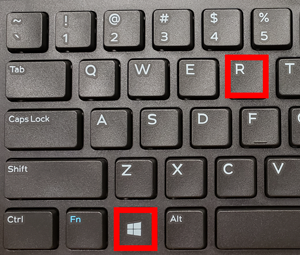
- Type winver and press OK
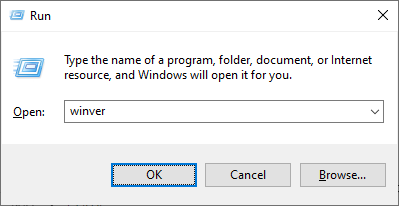
- A popup with your current Windows version will be displayed:
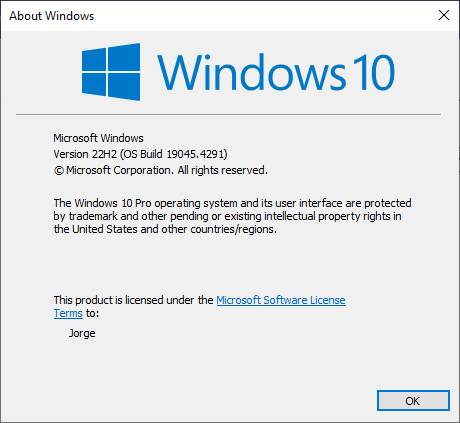
Important: With this method, each computer must be checked individually.
Can I upgrade my workstation(s)?
Workstations can be upgraded if they meet the minimum requirements. However, please be aware not all applications used on your current Windows 7 computer may be compatible with Windows 10. Contact your software vendor to verify that the application and version you have installed is compatible with Windows 10. For example:
- If you use QuickBooks 2012, you can contact Intuit to find out if QuickBooks 2012 is compatible with Windows 10 or if you need to upgrade to QuickBooks 2019.
- If you use Medisoft Version 19, you can contact your reseller (or eMDs, Inc.) to find out if Medisoft Version 19 is compatible with Windows 10 or if you need to upgrade to Medisoft Version 23.
If your workstations are able eligible to be upgraded, the upgrade process can take anywhere from 1 – 5 hours depending on the computer’s performance and applications installed. If your workstations need to be replaced, the process may take longer due to setting up a new system from scratch.
At TCSP, we understand that technology can be complicated, and all the information provided on this post may be difficult to understand and overwhelming. Businesses without an IT Support Agreement are welcome to contact TCSP. We will be providing complementary site assessments to eligible organizations because we want you to do what you do best and leave technology to us.
To learn more about the Windows 10 minimum requirements for workstations, please read Windows 10 – Minimum and Recommended Requirements.
Can I upgrade my server(s)?
Servers should not be upgraded but replaced. This is due to the high workflow the Server OS and server-based applications put on the server’s hardware. It is important to note that most servers have a life-cycle of 5 years. Meaning, a server should be replaced within a 5-year period to keep up with the latest technology, security, and performance. You can learn more about Maintenance and Life-Cycles here.
TCSP will not provide minimum nor recommended hardware requirements for servers. Servers must be tailored to each customer needs and business growth plan. Migration of servers could take between 15 – 30 hours depending on the current set-up. Be aware that customizes server orders can take between 2 – 5 weeks to arrive.
At TCSP, we understand that technology can be complicated, and all the information provided on this post may be difficult to understand and overwhelming. Businesses without an IT Support Agreement are welcome to contact TCSP. We will be providing complementary site assessments to eligible organizations because we want you to do what you do best and leave technology to us.
What are the Windows 10 hardware requirements?
Before purchasing a new computer with Windows 10 or upgrading a computer to Windows 10, users are recommended to review Windows 10 minimum hardware requirements. However, are these minimum requirements enough to carry your day-to-day business tasks? Most likely not.
It is important to understand that minimum requirements are specified to execute a particular task, Windows 10 in this case. What does this mean? It means Windows 10 minimum requirements will allow you to have Windows 10, but other applications (E.g. QuickBooks, Outlook, MS Excel) will cause an unstable system, slowness, or the application will not install.
Based on TCSP’s experience, we have created a basic table with Windows 10 recommended requirements for Business Users and Advanced Users. Since every business runs slightly different, the mentioned recommendations could change.
| Specs | Minimum | TCSP Recommendation | |
| Business User | Advanced User | ||
| Processor | 1 GHz processor or faster | Intel Core i5 (10th Generation) or higher | Intel Core i7 (10th Generation) or higher |
| RAM / Memory | 2 GB | 8 GB | 16 GB |
| Hard Drive Space | 32 GB HDD1 | 250 GB SSD2 | 500 GB SSD2 |
| Max Upgrade Age3 | 5 years | 2 years | 0 years |
1 A hard disk drive (HDD), hard disk, hard drive, or fixed disk (Hard Disk Drive). This is the most common type of data drive available in low-end and medium-end computers. However, most users and companies are replacing HDD with SSD due to the major boost in computing speed.
2 Solid-state drive (SSD) is the technology that replaces HDD
3 If you are looking to upgrade a computer to Windows 10, this is the computer’s maximum age. Be aware that in specific cases, some new computers cannot be upgraded to Windows 10 due to other hardware limitations.
Are there any references to verify this information?
Who can I contact for assistance?
Businesses without an IT Support Agreement are welcome to contact TCSP. TCSP will be providing complementary site assessments to eligible organizations. Call us at (203) 653-4643 or email us to discuss your business needs.
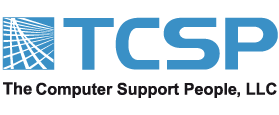 TCSP
TCSP


